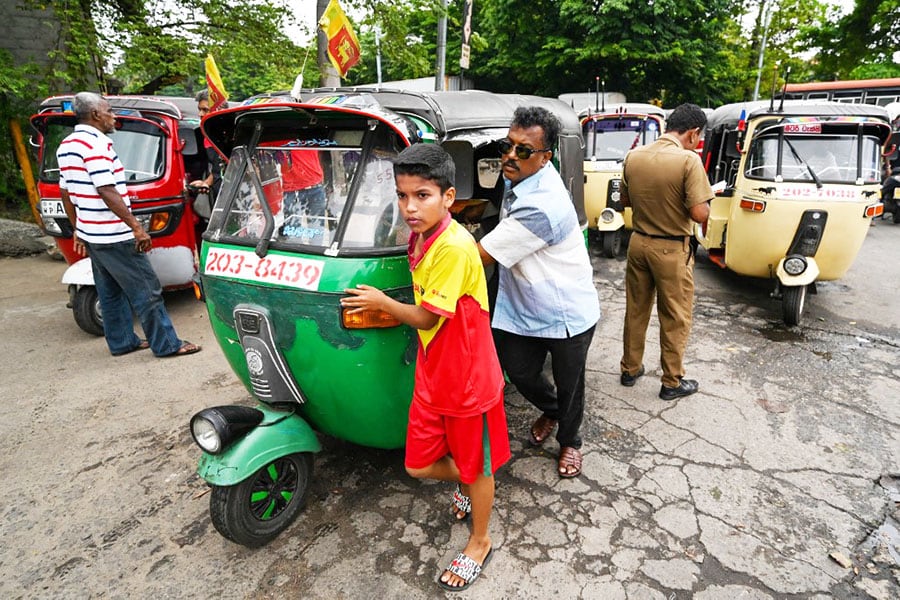
Crisis in Colombo
The choice of government is a matter for the people of Sri Lanka to decide, but they will do well to remember that—whichever regime assumes power—the country will need to come together as never before to weather the tough times ahead
 Motorists queue up along a street to buy fuel from Lanka IOC fuel station in Colombo on August 1, 2022. Image: ISHARA S. KODIKARA / AFP
Motorists queue up along a street to buy fuel from Lanka IOC fuel station in Colombo on August 1, 2022. Image: ISHARA S. KODIKARA / AFP
On June 30, 2022, Peter Breuer and Masahiro Nozaki boarded a plane leaving Bandaranaike International Airport. They had been in Colombo for work. As mission chiefs representing the International Monetary Fund (IMF), they had been involved in ten days of extended consultations with the government of Sri Lanka. But the team departed without concluding any loan arrangement, even as the nation faces its deepest economic crisis since independence in 1948.
Although global news coverage of the crisis rose to prominence only in recent weeks, economic pain in the 22 million island-state has been gestating for years. Government debt as a share of output had already been an elevated 70 percent or so through the first half of the 2010s, before accelerating in the second half of the decade, rising to more than 100 percent in 2020.
Observers of the economic fortunes of the country would have pointed to some early signs of potential troubles to come. The government had borrowed heavily to finance the construction of an international airport and seaport in the southeastern part of the country. These turned out to be unprofitable white elephants, and accusations of political corruption swirled around their construction and operation.
While challenging, this debt burden was still potentially manageable while global interest rates remained low and favourable. But as inflationary pressures began to build worldwide, central banks started raising their policy interest rates late last year and this year. This meant higher borrowing costs for everyone, including Sri Lanka. What was a difficult-but-manageable situation quickly morphed into an unsustainable crisis.
Also read: Sri Lanka's many missteps that led its economy into a tailspin







